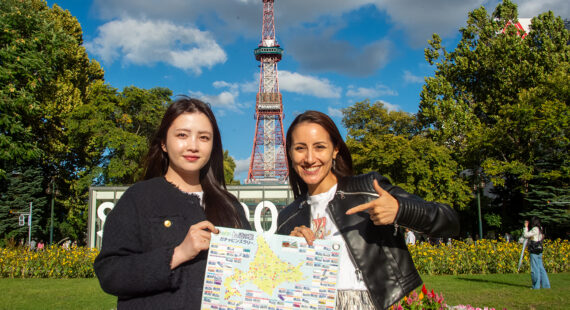Hello there! This is Jordan from Hokkaido Treasure Island Travel! I recently joined the team here at the beginning of April, though I’ve been living in Hokkaido for almost the past ten years. After doing years of independent work in the tourism sector, I’m excited to be a part of Hokkaido Treasure Island Travel and start sharing my excitement about Hokkaido with new travelers!
My profile and other information is summarized below. Travel Consultant: Jordan
During my time living here I have fallen in love with the island and made it a point to explore all over – especially the smaller towns and areas that don’t show up when you look up “Hokkaido tourism” on the web. It is often in those small places that are easy to overlook on the map where the most unique experiences and locations are found. In fact, for most of the past ten years I have been living in one of those regions- the Okhotsk area of Hokkaido. Oftentimes when I tell someone the name of the town where I lived, I’m met with blank looks even from people who have lived in Hokkaido for a while- not to mention travelers from other places in Japan! It is not often that the average traveler takes a tour up to Hokkaido’s northeast.
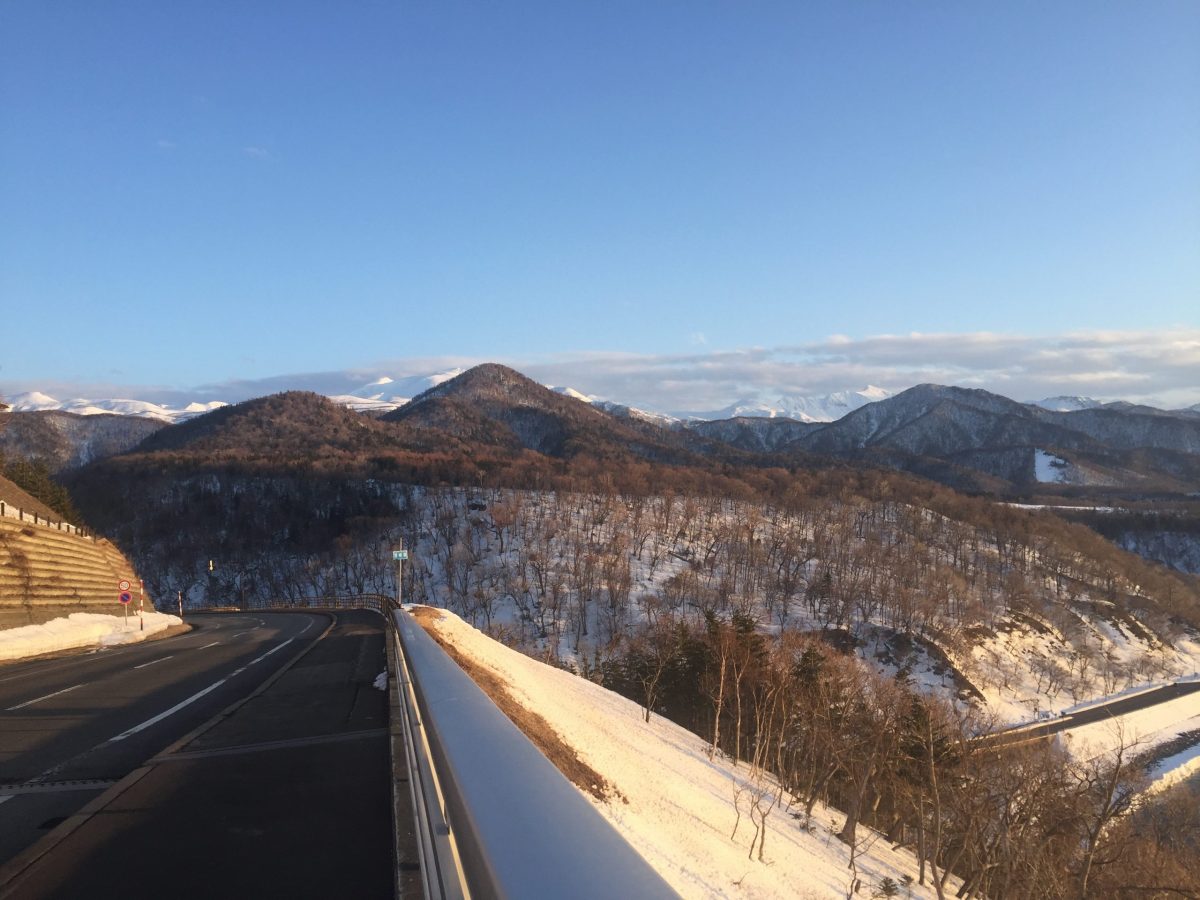
However, despite it not having the name recognition of places like Sapporo, Niseko, or Furano, the Okhotsk region is wild, full of kind people (who are all ready to battle the fierce winters that occur there with you!), and especially beautiful. For all of its borderline frontier, untamed, image, the Okhotsk has many vast flower fields scattered around the area, which attract visitors and brighten the landscapes in the spring and through the seasons after the snow finally melts. The activities that can be found during this time are not to be missed!
This time I’m going to introduce you to a few places that I love in the region. Although I can gush on about the wild places, minor festivals, and rare sights that I have found or been introduced to over the years, this time I am going to focus on the flower fields of the Okhotsk. Hokkaido is known for being wide and more spacious when compared to the rest of Japan, the Okhotsk is especially so. Due to its size and sparseness of the towns scattered throughout it, many localities have used their ample space to create vast flower fields that bloom at periods during the year, or in the case of one city, a park that blossoms in waves of different flowers throughout the months without snow.
We will take a tour starting at the Moss Phlox Takinoue Park, travel towards the sea to the Kamiyubetsu Tulip Park, then over to Ozora town and the Asahigaoka Park. We will then begin the trip back down by circling back south towards the Taiyo-no-Oka Engaru Park, and finally ending up at the Wisteria Park in Maruseppu. For those traveling from Sapporo, I recommend a chartered car. There are a lot of deer, foxes, and sometimes even bears to be seen (and avoided!) on the way. I have even seen quite a few tanuki driving at night! Also, due to the remoteness of the area, public transportation is infrequent and occasionally canceled due to bad weather. Keep this all in mind when it is time to make your trip up northeast!
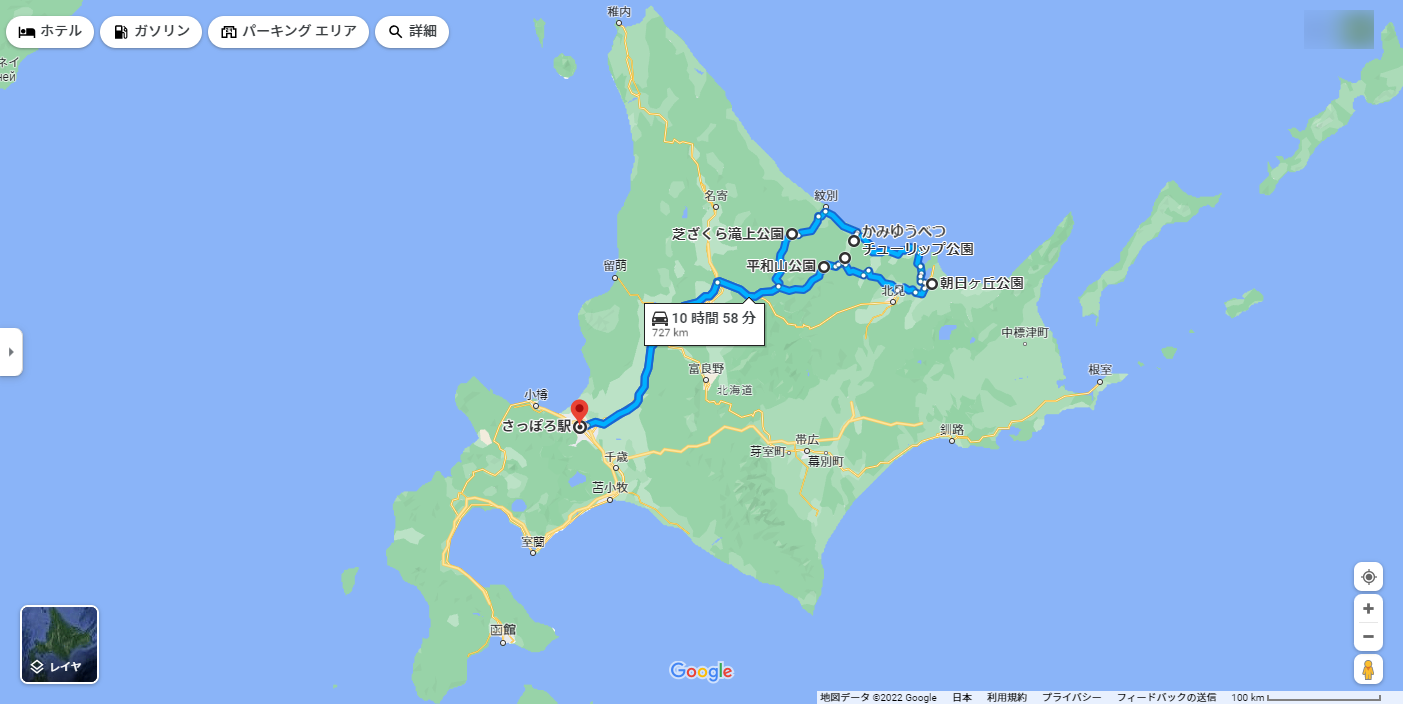
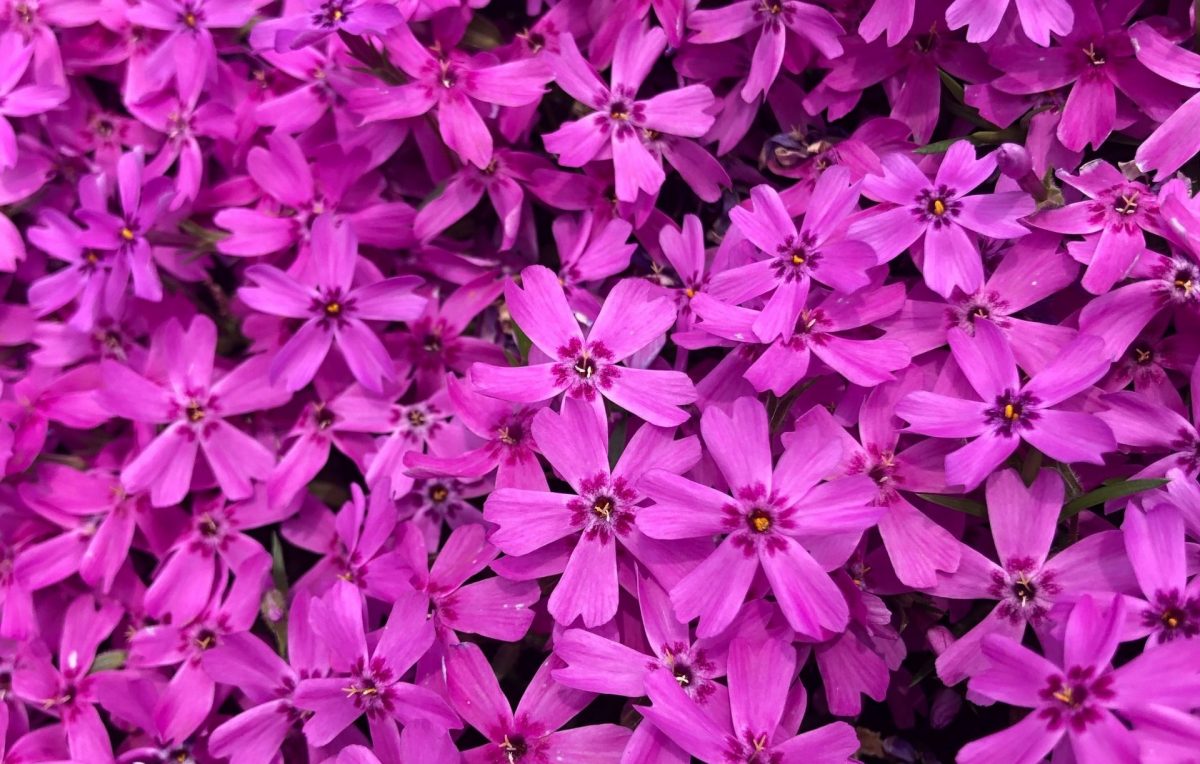
Moss Phlox Takinoue Park
Takinoue will always hold a special place in my heart as the town I lived in for nearly eight years. The town itself is small and nestled in a valley, but is surrounded by vast farms and forests on all sides. Not a place visited often on tours besides in the spring, Takinoue is famous in Hokkaido for its shibazakura, or moss phlox – also known as pink moss.
Originally the hillside where the moss phlox now is located was planted with cherry blossom trees, but during the infamous Toya Maru Typhoon most of the trees were blown down. This is in fact a common story in the region of the Okhotsk, and the Toya Maru Typhoon affected the economic growth and industries of the area for a long time in some interesting ways that can still be seen today. Due to this loss, the mayor at the time replanted the hillside using one mandarin orange-box full of seeds. His thinking was that should another catastrophic typhoon ever come, these low-to-the-ground plants would be unaffected. So began the long history of the moss phlox in Takinoue!

During May tiny pink flowers completely cover the hillside of the Moss Phlox Takinoue Park. Take a walking tour through the park! It is bright pink and vibrant, and when the hill is in full bloom the area smells what I think is a gentle cherry-like scent. Depending on the weather, the blooming of the moss phlox can also coincide with the cherry blossoms, and everything is brilliant pink.
By visiting the park itself, you can get up-close to the flowers and enjoy strolling through the grounds. There are also many events and activities that happen during the moss phlox festival held in the month of May. I recommend driving up the opposing hillside up to the Takinoue Shrine- from there you get a beautiful view of the entirety of the park, and the shrine itself is lovely!
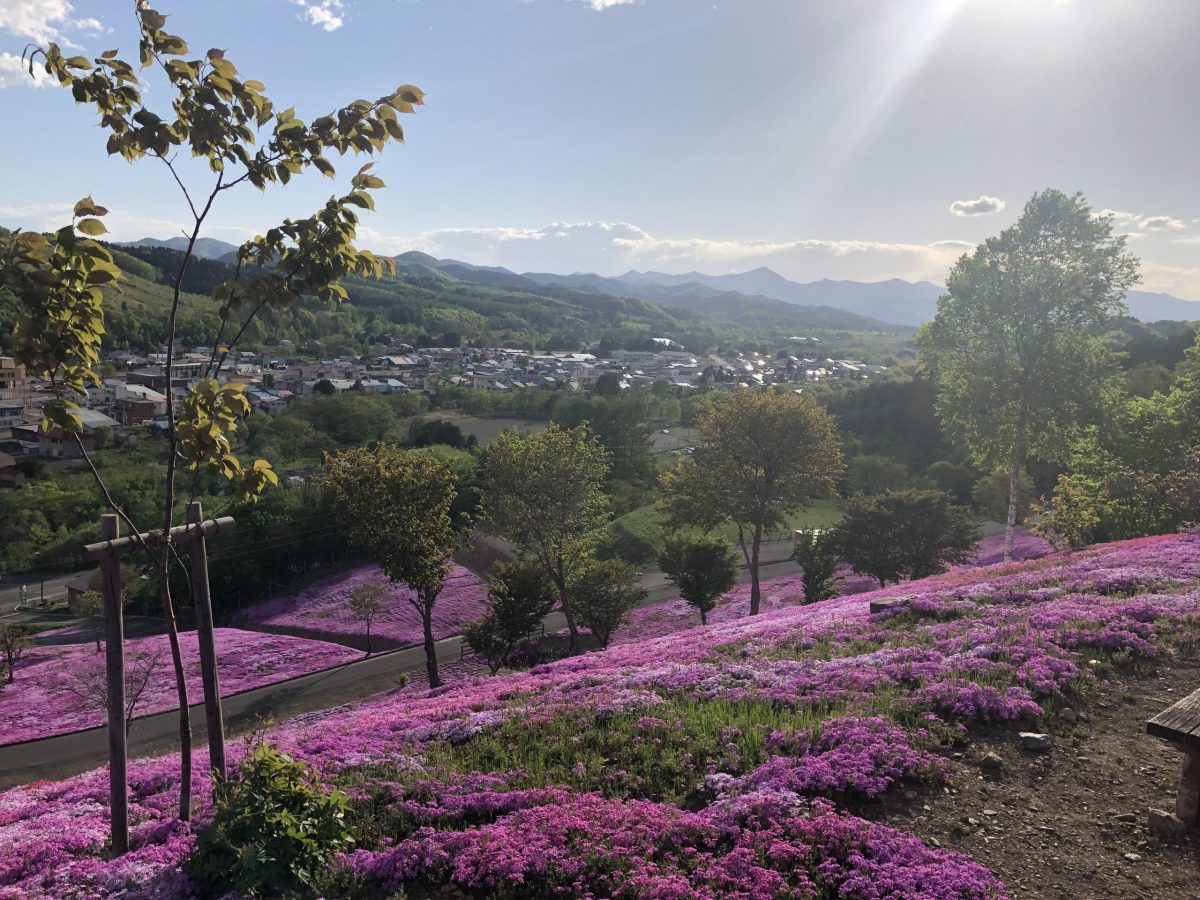
I love visiting the park in the late afternoon, when most of the other visitors have gone home and the park is getting quiet. As the sun sets the moss phlox park and the town are truly beautiful, and one of my favorite things to do while living there was to sit on a bench at the edge of the hill and watch the town as night approaches. On lucky days with particularly great sunsets, I would drive quickly from my house up to the park so I could enjoy it from there!
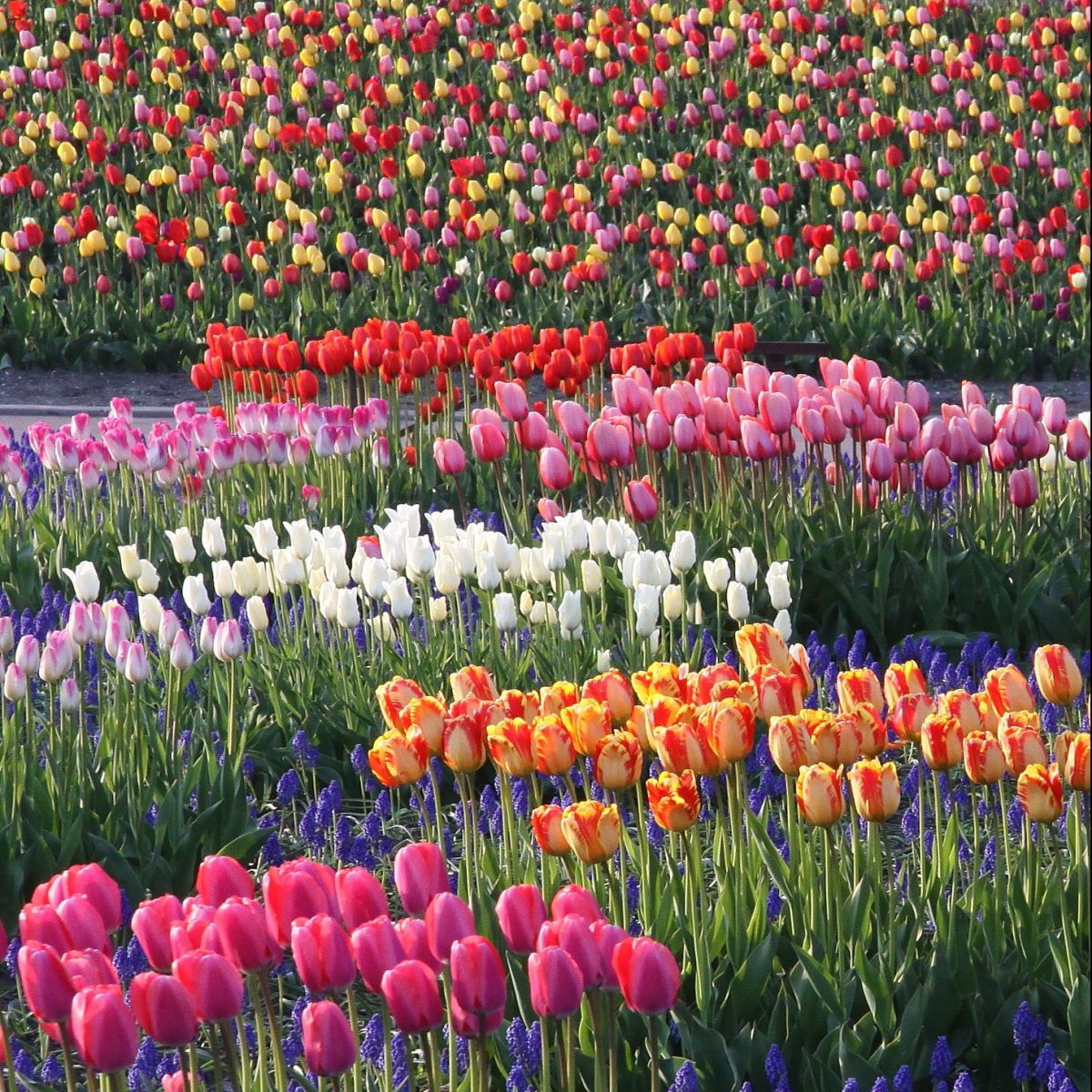
Kamiyubetsu Tulip Park
From Takinoue, next you are going to drive up towards the frigid Okhotsk Sea and take a right! A leisurely driving tour next to the sea will take you through Yubetsu town and bring you to Kamiyubetsu. Although their names share a word, they are in fact different towns that are managed by the same local government (Yubetsu is well known for its seafood). Kamiyubetsu is famous for its enormous tulip park! I recommend traveling from the moss phlox in Takinoue right to Kamiyubetsu, since typically both places will be blooming at the same time – though definitely check the weather and flower reports! Obviously the weather changes the blooming times and lengths of the flowers all over Japan every year, so keep an eye on it when you decide to visit.
To start off, I have to mention that the Kamiyubetsu Tulip Park is so big! With more than seven hundred thousand tulips of over two hundred varieties and the park covering an area of 12.5 hectares, the tulips stretch far across the fields in a jumble of colors and is one of the biggest in Japan. I love this place, and have been there many times over the years. It is vibrant and lively, and popular for taking pictures of both the flowers and the Dutch windmill in the middle of the fields. One of the activities it is also possible to do here is dig up bulbs and take them to plant in your own garden (or give as a gift!) Catching the tulips on a sunny day is a perfect way to spend a spring day in Japan.
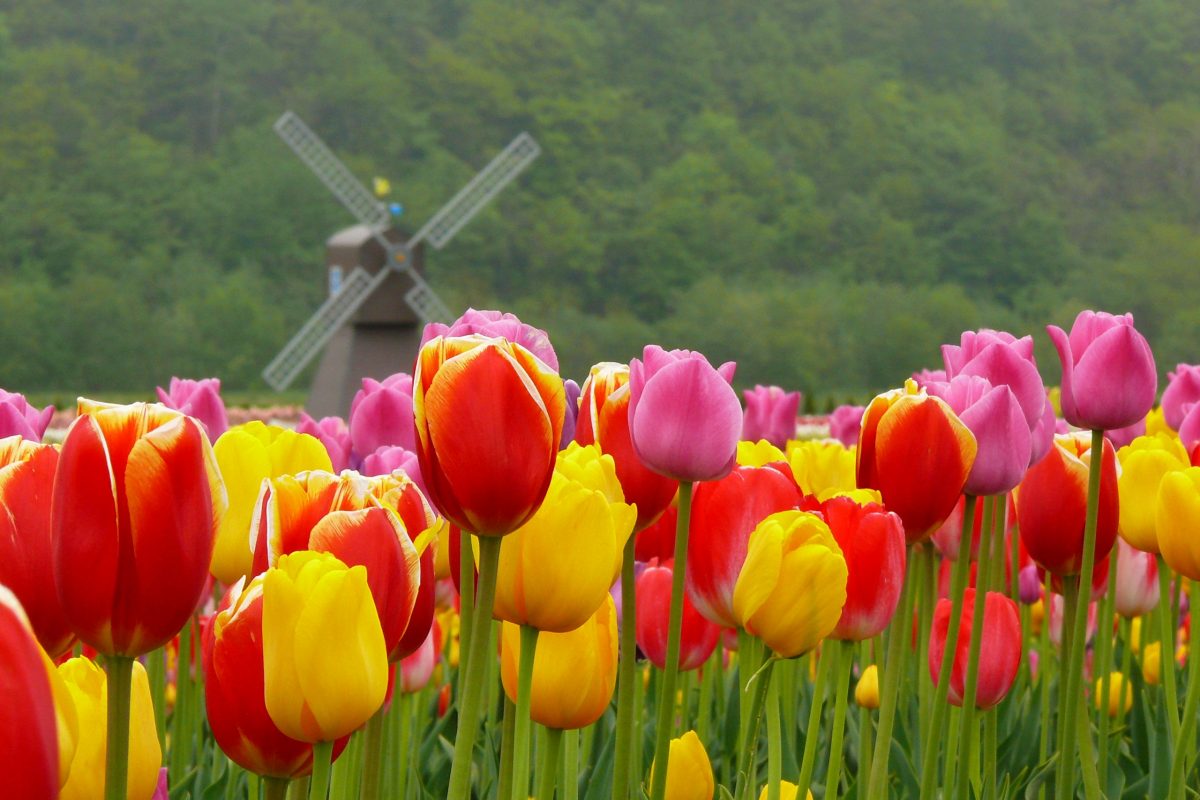
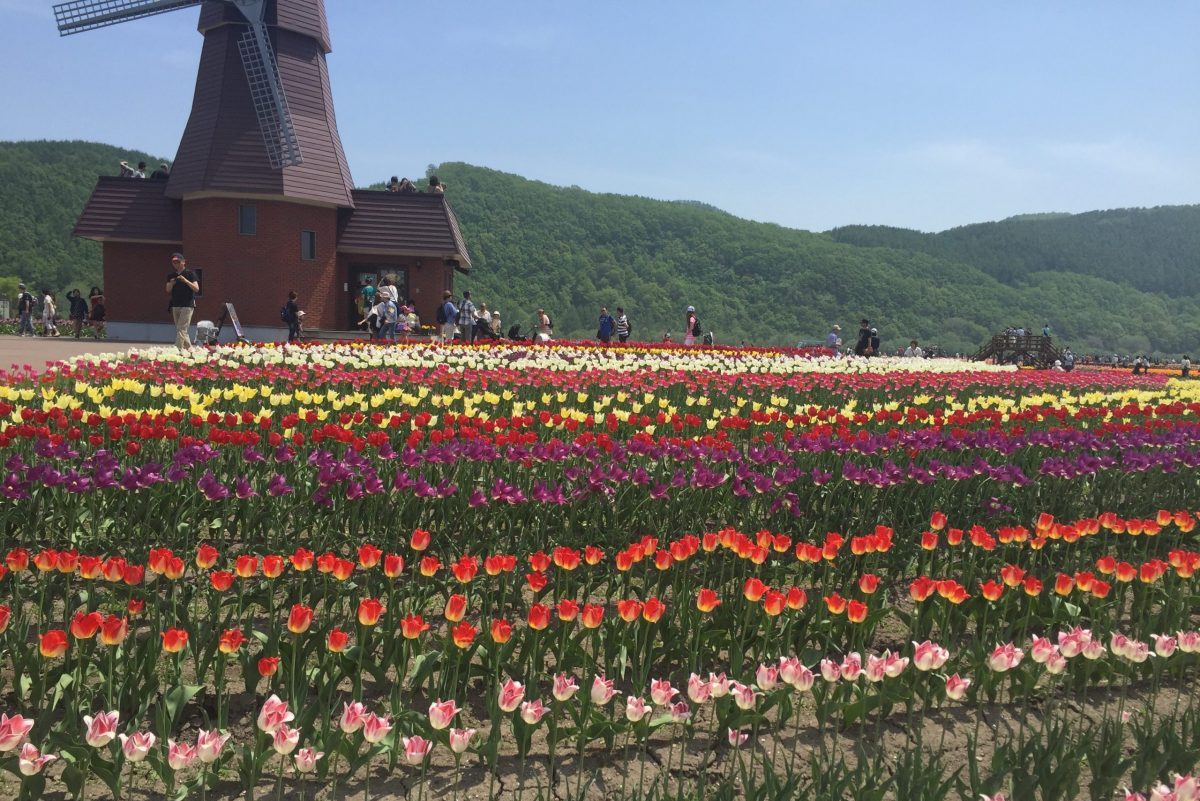
Although I have been there many times throughout the years, I still am hoping to catch it again this spring! Also, might I suggest- this is a good place for a date! With the wide open spaces of the fields, it is easy to stroll through the flowers while chatting and have a good time. And of course, there are a ton of places to take cute pictures!
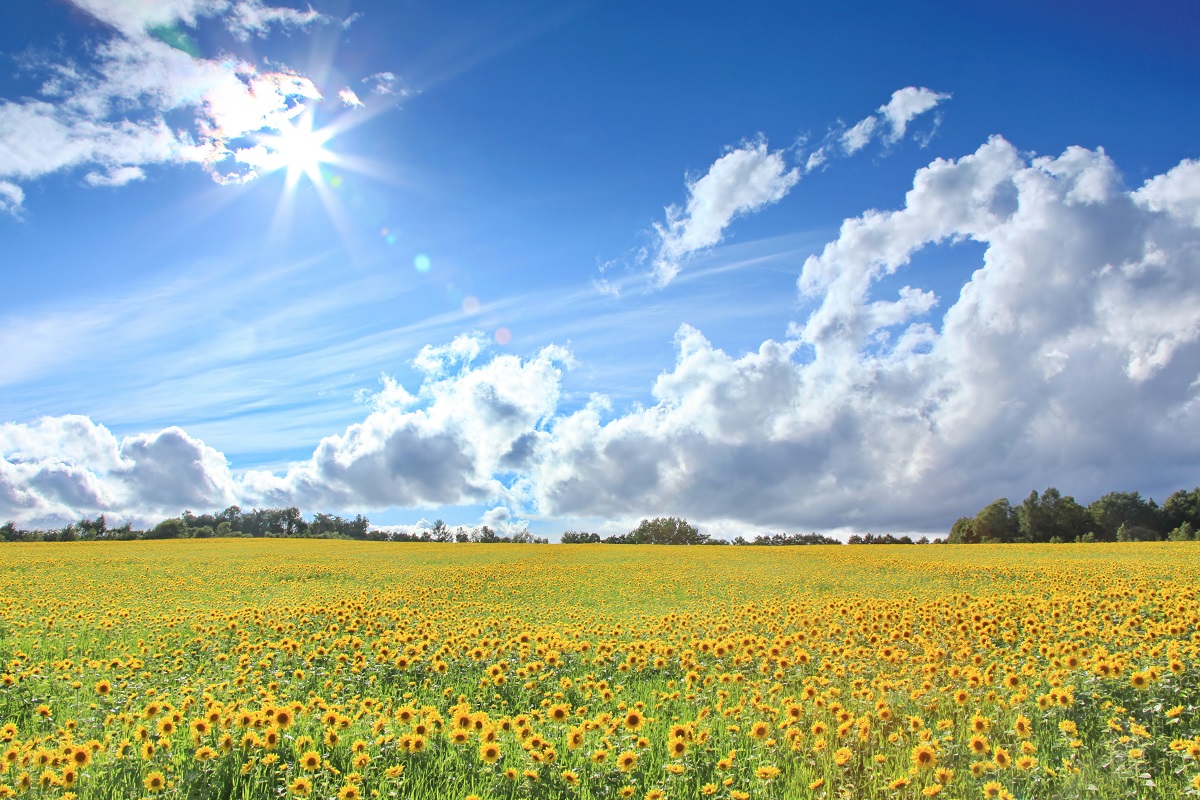
Asahigaoka Park
Veering slightly off the loop we have been taking so far of our tour around the Okhotsk, we shouldn’t miss the chance to drop by Ozora! Ozora is a town that was made relatively recently in the early 2000s after the villages of Higashimokoto and Memanbetsu combined into one town, which they named Ozora. You can still see the names of the original towns on local facilities like the schools and post offices in the area. The new name for the town, Ozora, is made of the kanji for big and sky- and you can see why if you visit the Asahigaoka Park located here!
From the observatory at the top of the hill, you can look out over vast fields of sunflowers. In the distance on days where the weather is good, you can see all the way to Abashiri in the north and the Shiretoko mountain range to the east. Plus, the movie Dreams by the legendary director Kurosawa Akira was partially filmed here. Dreams was one of his later works and made with George Lucas and Steven Spielberg, though the screenplay is entirely a Kurosawa original. Watch this ethereal movie, and keep it in mind as you gaze out over the fields of Asahigaoka!

If you can’t make it to Ozora in the summer or fall, or are already in the area for flowers in the spring, consider swinging by in May to see Ozora’s moss phlox park! Although it is newer than the one in Takinoue, it is known for the designs made every year using different colors of moss phlox on the hillsides! Plus, one of the activities they do is light ups on some nights during the period when the moss phlox blooms, so you can visit at night to see pretty displays of illuminated flowers. Since I haven’t yet had a chance to make it to one of the night illuminations, if you go, let me know! I really want to hear more about it and whatever you do along your tour in Ozora!
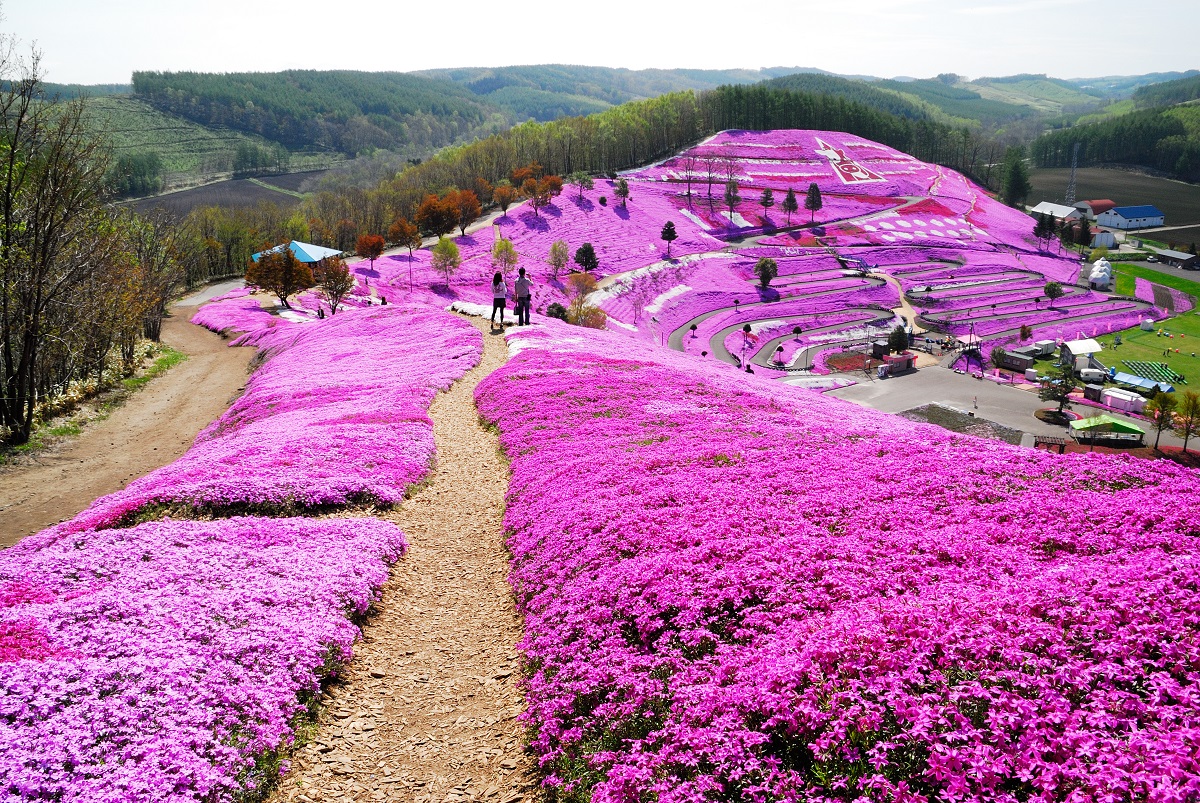
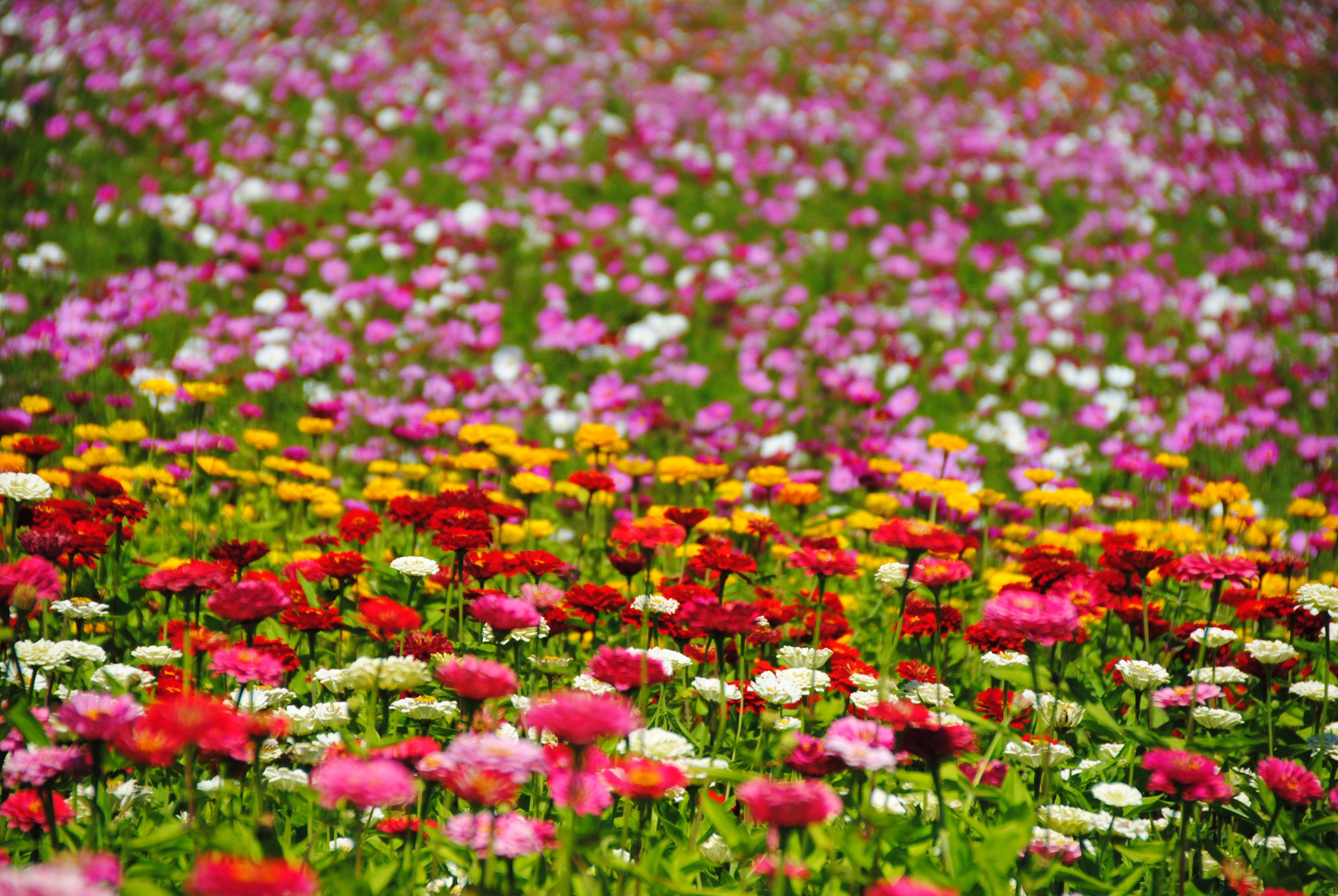
Taiyo-no-Oka Engaru Park
Although I heartily recommend visiting Hokkaido and Japan in the spring, it can be hard to get the time off to make the trip if vacations don’t align. However, there is a place in Okhotsk where even if you can’t come in the spring, you can still see flowers: the Taiyo-no-Oka Engaru Pak.
Okhotsk is known for its wide uninhabited spaces, and that can definitely be felt here at Taiyo-no-Oka. The park is only a 15-minute drive from Kamiyubetsu’s tulip park, but traveling here will take you through small towns and mountain roads to wind up at this sprawling and hilly park. Throughout the year different types of flowers bloom depending on the season. Depending on the month you can see cherry blossoms, moss phlox, azaleas, peonies, zinnias, and of course, cosmos. This period stretches from the spring through all the way until the autumn.
The Taiyo-no-Oka Engaru Park is most famous for its autumn flower display- the aforementioned cosmos! The cosmos fields here are the largest in Japan, and as you take your tour through the park you can see many unusual varieties. In the cosmos area of the park, over 10 million flowers cover an area of 10 hectares. My favorite type that I have seen so far is the chocolate cosmos. They are a dark red, close to black, and do, in fact, smell chocolatey!
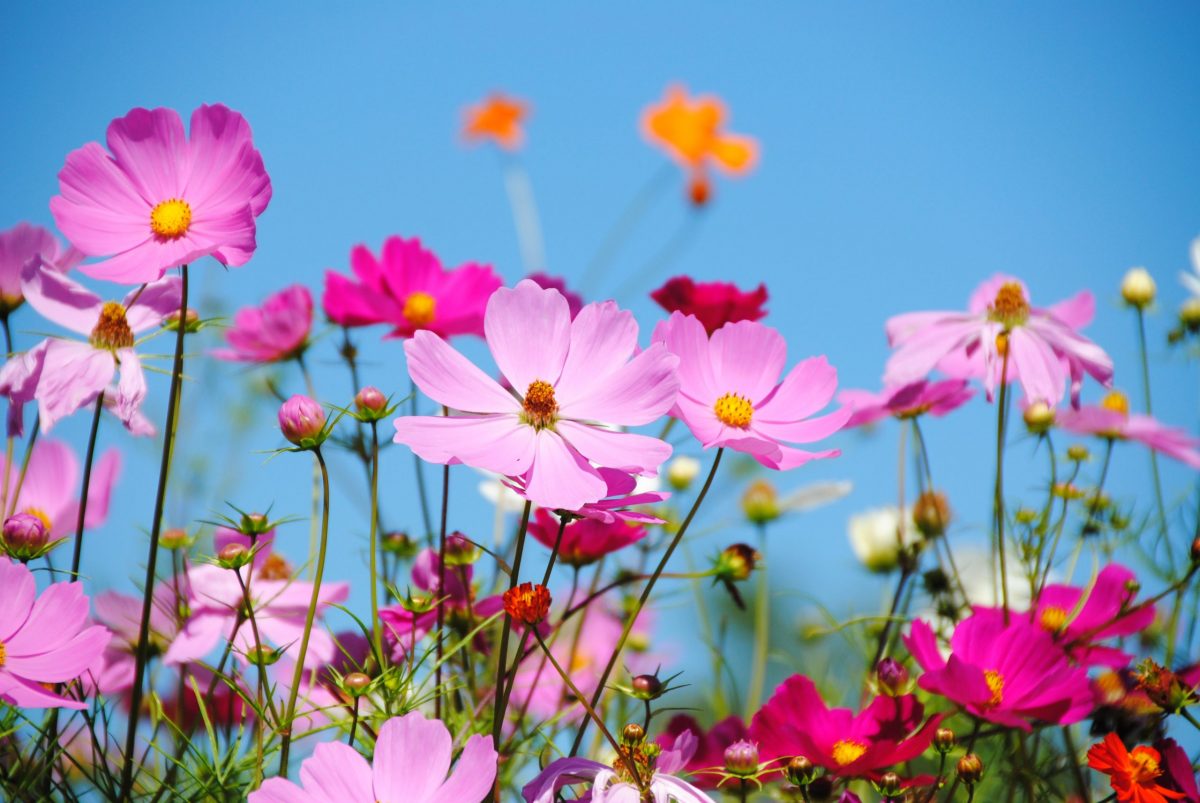
Something I find really extraordinary about here is that a lot of the care of the park, such as weeding, planting, and guiding of the park, is done by volunteers from the town. Every year thousands of the townspeople work together to keep the flower gardens beautiful and thriving.

Part of the Taiyo-no-Oka Park, lying on the very edge, is Ganbou-iwa. It can be seen from nearly anywhere in town – a gigantic rocky hill that stands tall above the buildings that are located at its base. There is a lookout point at the top, and over the years I have done the quick climb up the hill during the night multiple times! Although Engaru is not a large city like Sapporo, Asahikawa, or other cities in Japan, the night view from the top is peaceful and quiet. Taking the opportunity for a quiet activity like this while in the wilds of the Okhotsk will add another dimension to your trip here!
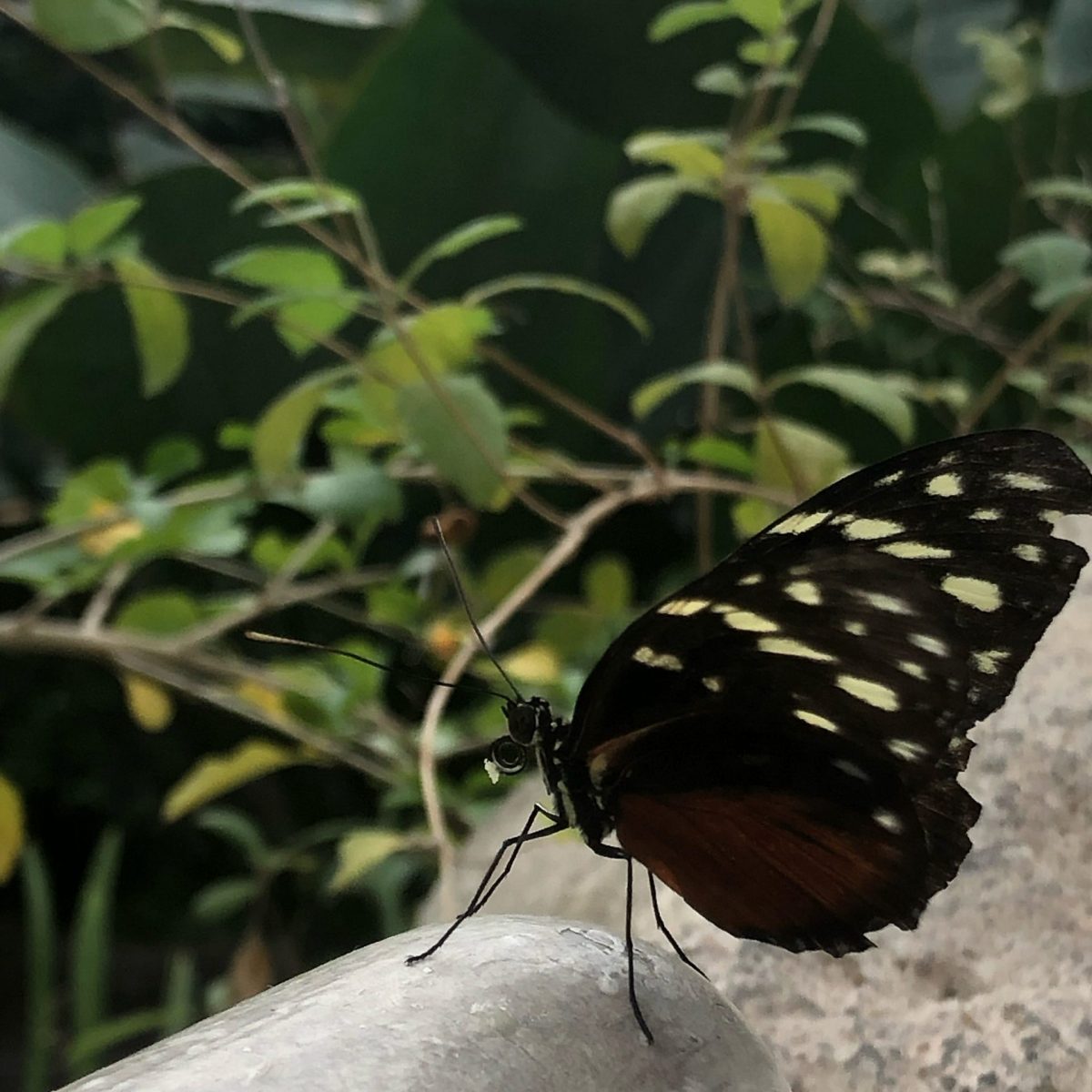
Maruseppu Wisteria
Maruseppu is officially part of the Engaru township, but it is separated by an almost thirty-minute drive along some forested roads. If you have the time, there are a few good onsen hot springs on the way too! One of my favorites of the area is located deep in the mountains here. I really like Maruseppu because it has a lot of character. I also enjoy camping here in the summer and autumn too, because there are a lot of activities right around the campsite! Top among these is the Maruseppu Insectarium, which is home to many stag and Hercules beetles! The staff are extremely knowledgeable, and when they aren’t as busy it is really interesting to talk to them about what they do. There is also a butterfly conservatory!
But – that is not what I am talking about this time! This time I want to introduce you to the Maruseppu Wisteria park, set up on the hillside of the village. The wisteria growing along the trellises bloom in the beginning of June through around the middle of the month, so the period is relatively brief compared to the other flower parks in the area. However, I can say from experience, that catching it during that time is absolutely worth it!
Over two hundred wisteria trees bloom in gentle shades of purple, pink, and white on the hillside here. I somehow have managed to always go on rainy days every time I have been, but even in the damp it has been worth it to wander among the flowers with my umbrella, enjoying the sweet flowers against the gray skies.
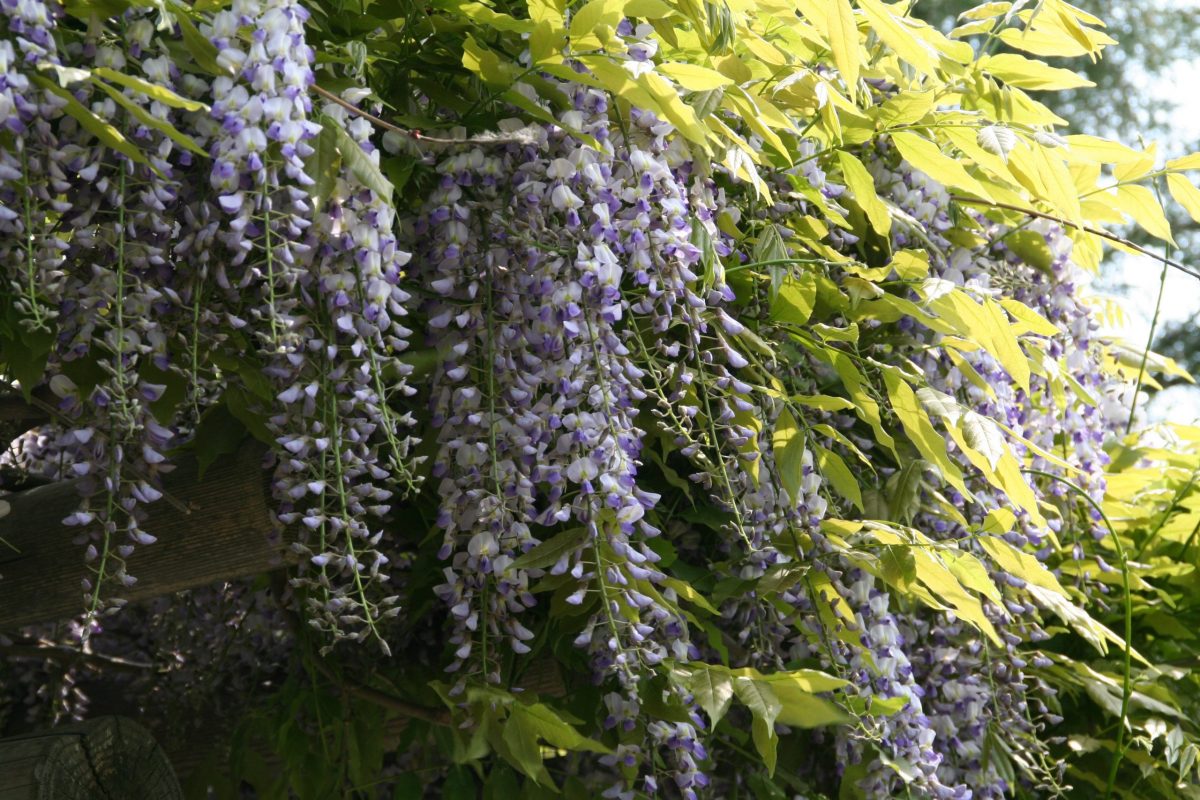
The park originally began with one wisteria tree planted by a monk from the temple located here. Since then, due to receiving other trees and taking cuttings from the original plant, the area has grown to have over two hundred trees. This does not make it the largest in Japan, but it does make it the largest in Hokkaido. I find I enjoy the smaller scale than might be found elsewhere, though, and the cozy atmosphere can’t be beat.
I really love the Wisteria Festival that is held on the first Sunday of every June! For such a small town, many of the villagers and visitors from the surrounding area come to join the festivities. A unique activity that can be seen during the festival is an outdoor tea ceremony! Well, generally. As I said before, during the years I have gone it has always been raining, so I took part in the tea ceremony inside the premises instead! There is a strong community of those who practice tea ceremony in this area, so the ceremonies performed here are always very good and easy to participate in!
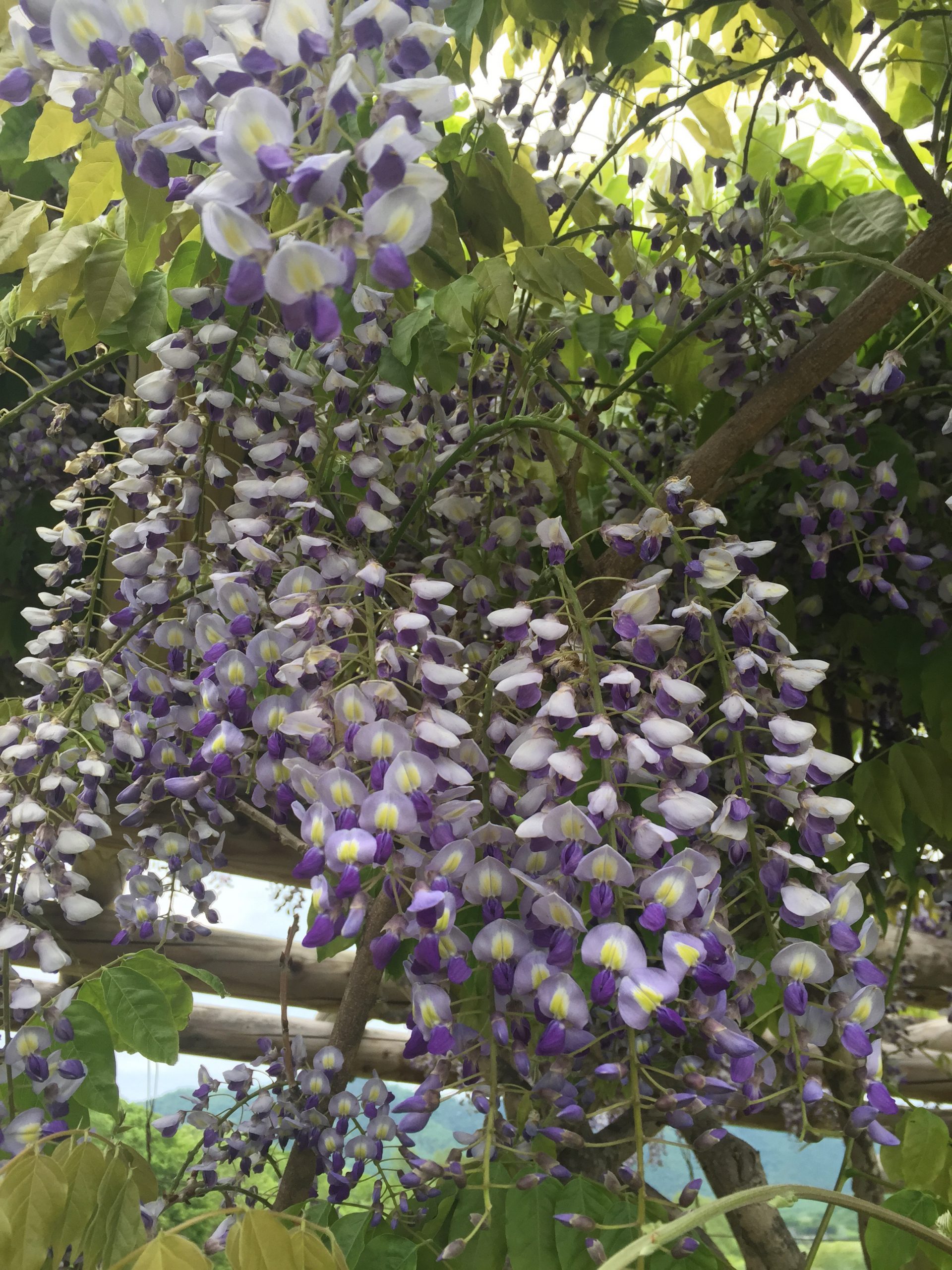
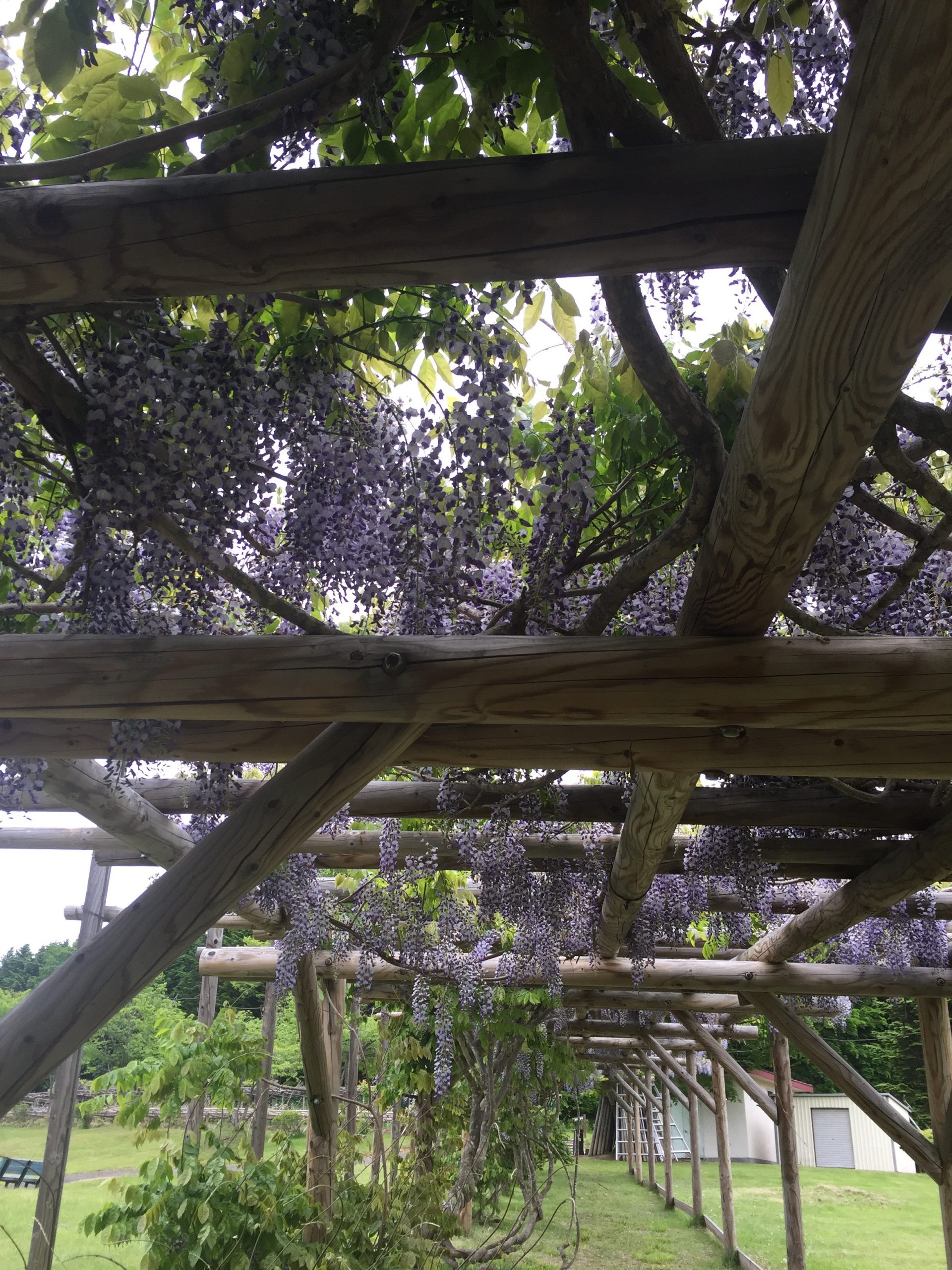
Although I have spent some time telling you about what can be seen and the activities to do in the warmer months of the year, I can’t miss the chance to also tell you about winter in the Okhotsk. Although it does not get quite the snowfall that areas like Sapporo or Niseko do, the region is white and bitterly cold throughout the winter months. This is especially true during the times when the ryuuhyou – the drift ice – finally arrives from Russia to the northeastern coasts of Hokkaido. Starting at the Amur River 1,000 kilometers away, cold water from the river colliding with the freezing temperatures of the sea causes sheets of ice to form. This ice eventually makes it way to the Okhotsk coastline in February, creating breathtaking views of the sea as the drift ice hugs the coastline and transforms into an icy seascape. This is the only place in Japan where this phenomenon can be seen!
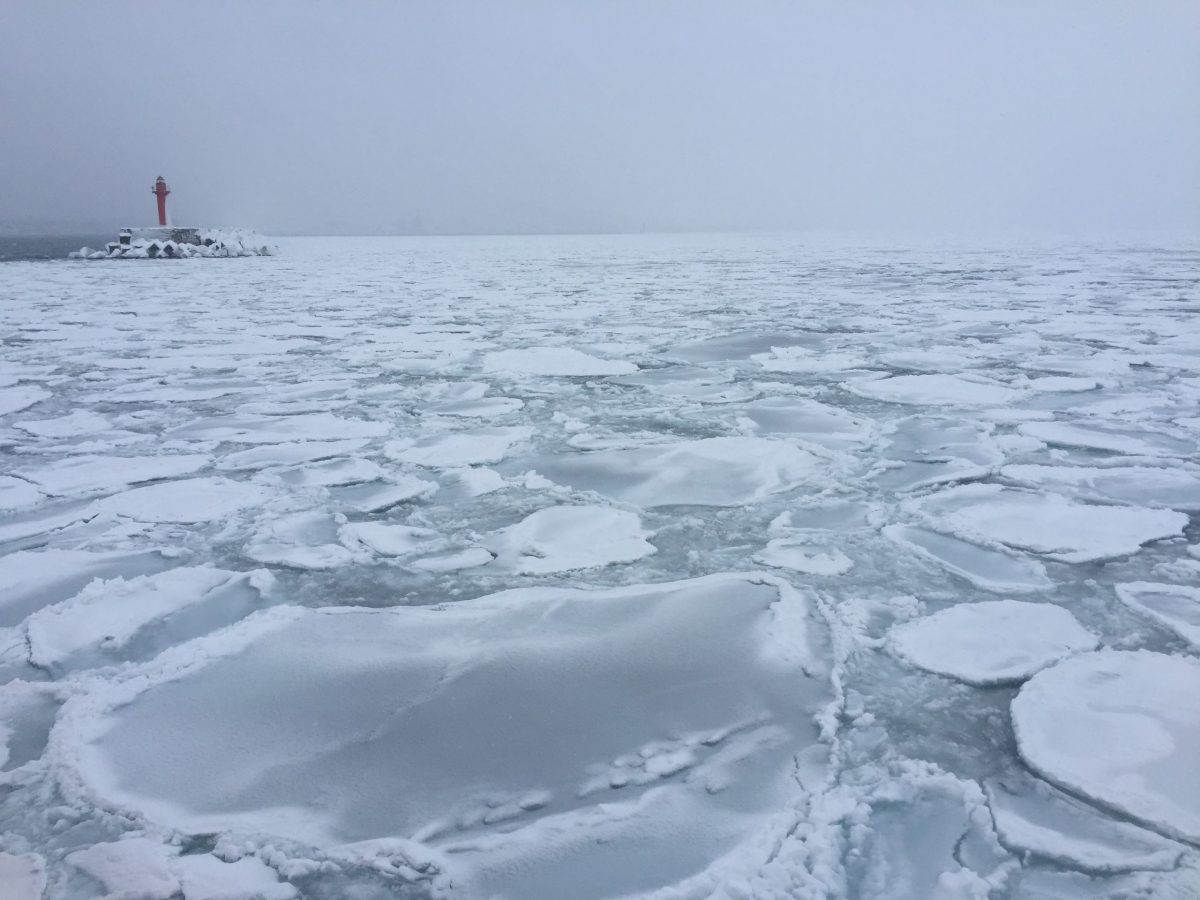
In the cities of Monbetsu and Abashiri where the drift ice packs in tight, I highly recommend taking the opportunity to ride an ice-breaking ship! These trips are incredibly fun, and they bring you up close to the wildlife that is visible during this period- Steller’s sea eagles, seals, and other birds and animals! Under the ice and able to be seen just by scooping up the sea water is clione. These eerie but beautiful sea creatures are only around during the period where the drift ice is here, and will disappear when it is gone. Remember to dress warm and bring a camera! This is definitely an activity you should not miss.
If you find yourself wanting to get even closer, you can also walk on the ice drift itself in Utoro! Led by guides out onto the floes, you will put on dry suits and clamber onto and over the sheets of ice. Because of the dry suits you will stay warm and dry, even if you end up taking an unintentional (or maybe intentional!) dunk in the sea. By going with a guide you will be sure to stay safe and have a lot of fun! I definitely have every time I have gone! The most recent time I went was actually at the end of March! Because it was the end of the drift ice season, my friend and I were able to swim in the ocean with the ice.
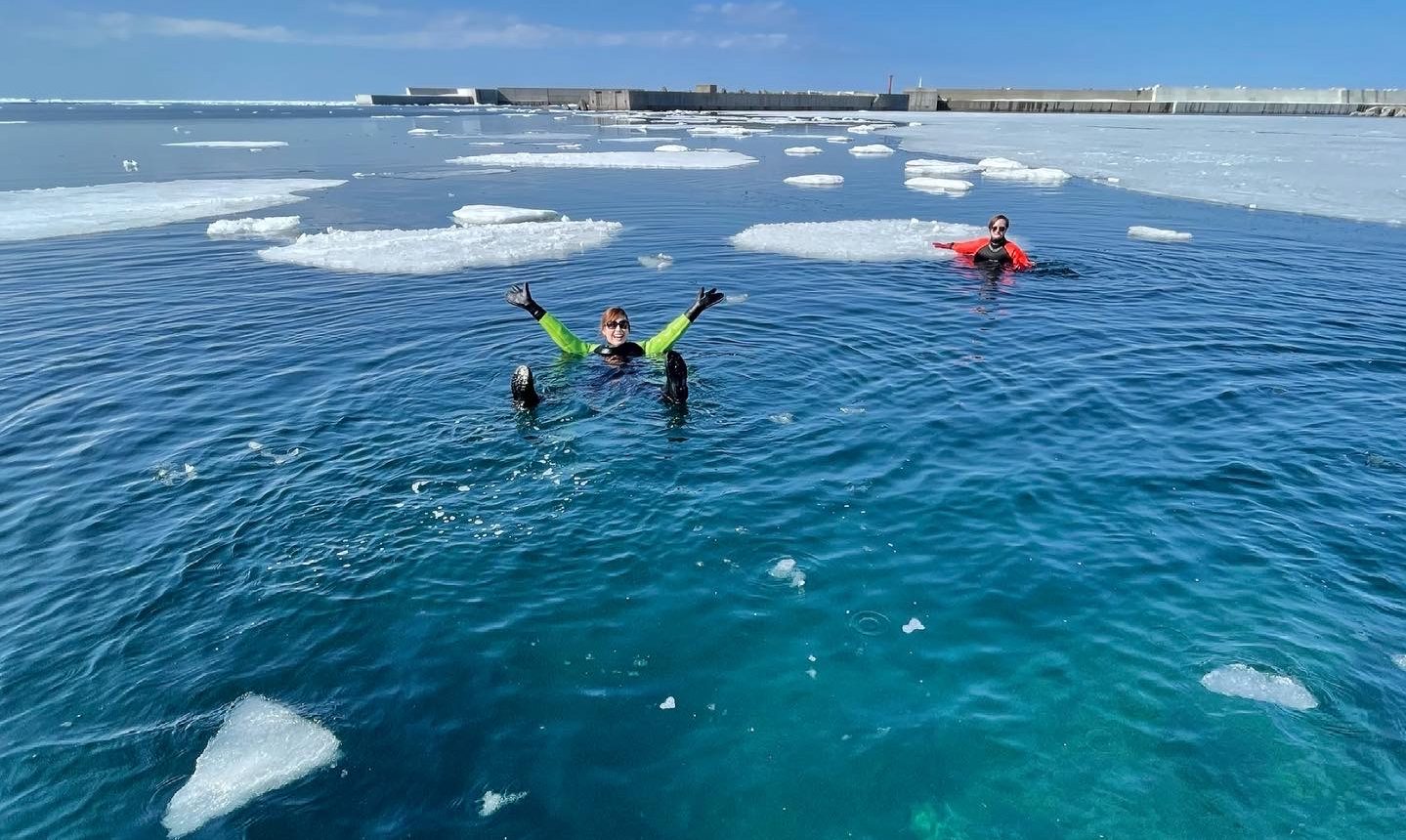
Although I could go on for much, much longer about the Okhotsk and all the things I love about it, I’m going to leave you here for now. I hope that you are feeling the itch to visit this little-known part of Japan and have an experience that even many people who live in Hokkaido have never had! Although I live in Sapporo now, I will always cherish my time spent in the Okhotsk region. I would love to share my love of the Okhotsk and the activities you can do there with new visitors!
Recently my coworker, Aurore, also visited the Okhostsk! Her visit was focused on the Shiretoko area, and she also got to enjoy the drift ice and snowshoeing out to the Furepe waterfall. Plus, she went to one of my favorite cities in Hokkaido- Abashiri! Definitely check out what she wrote. If you want more information about Okhotsk in general, take a look at this post!
At Hokkaido Treasure Island Travel we want to make a truly unique and unforgettable trip for you and your loved ones while you are in Japan! If any of the places in the Okhotsk I mentioned caught your attention, reach out so we can start planning your perfect holiday to Hokkaido! I hope to see you on exciting travels in the Okhotsk and across the rest of the island soon!

